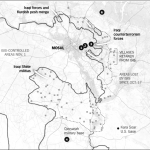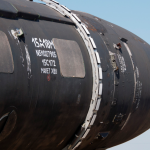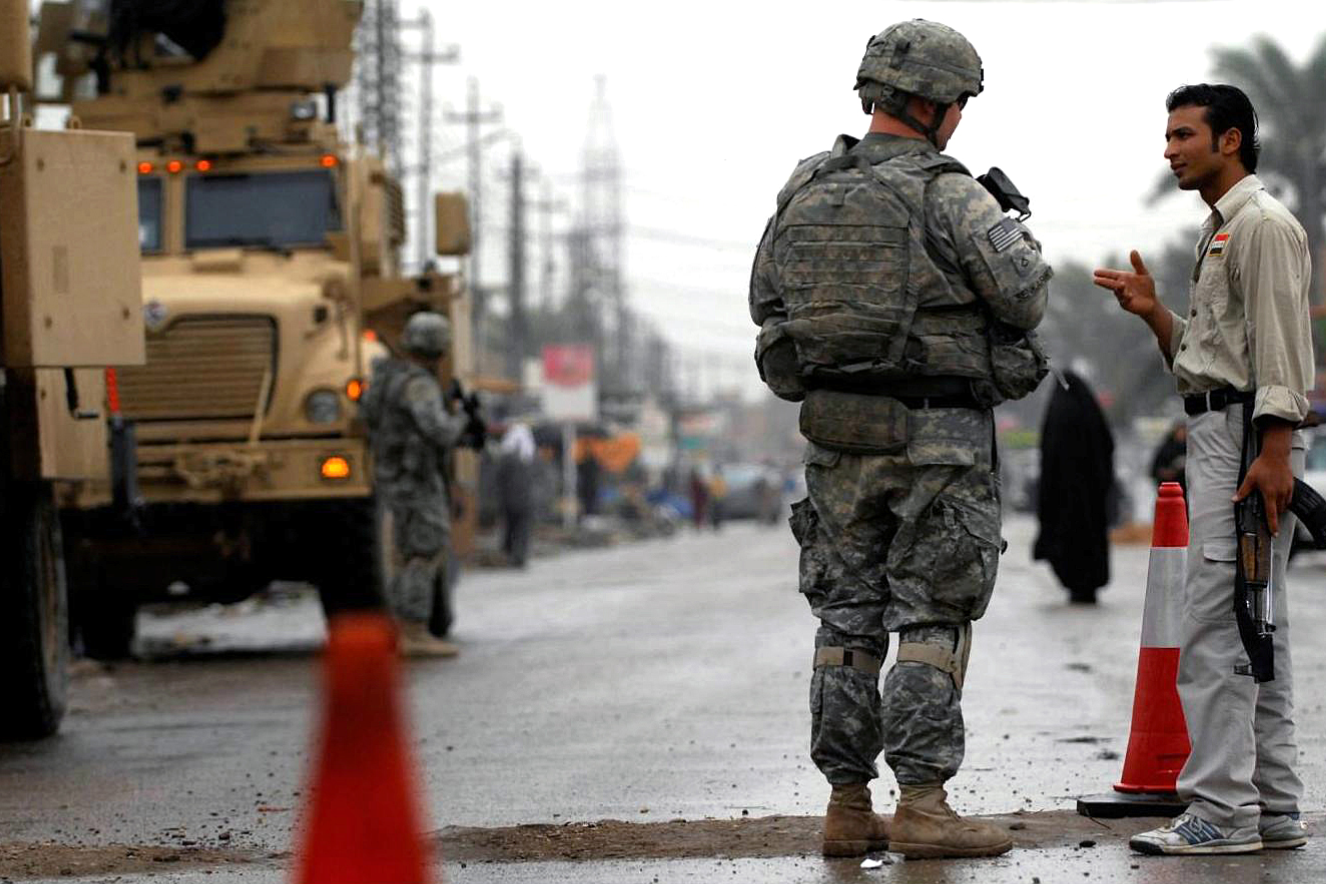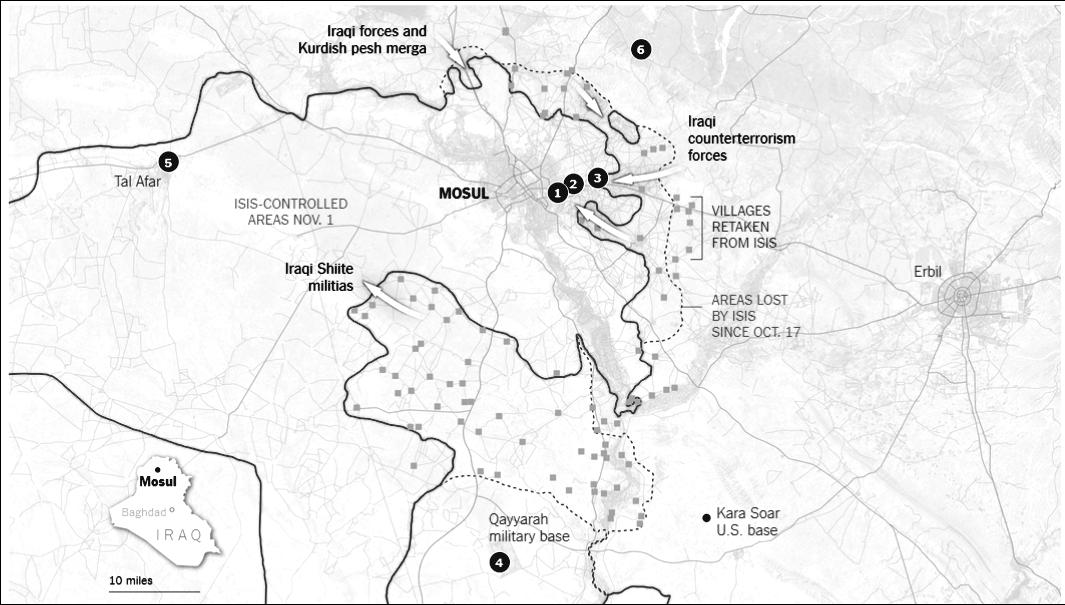The US’s military strength and presence in the Arctic sea is lackluster, falling far behind Russia’s. An immediate increase in icebreakers and military bases is needed to check Russian expansion.
I
n 2007, a robotic Russian submarine planted a titanium Russian flag under the North Pole, claiming the territory.2 Tension near the pole has been heating up ever since, with multiple countries attempting to demonstrate ability to control the region and exploit the resources. Apparent global warming is to blame for this recent spike in interest and activity related to the arctic. Some proponents of global warming speculate that by the 2070s or 2080s, even the most stalwart of ice sheets will have melted, a figure extrapolated from the 11% shrinkage in total polar ice over the last decade.3 Whether or not these estimates are accurate, which is a hotly debated topic, an incredible wealth of natural resources exists beneath the pole hence Russia’s increased alarming activity. In 2008 the United States Geological Survey found that up to 90 billion barrels of undiscovered oil may exist under the arctic ice shelf, above and beyond even more natural gas.4 Russia has recently run a number of military exercises to reinforce its claim to this territory. Its claim is tenuous, based on a shared undersea shelf. Nonetheless, some of Russia’s Special Forces plunged into the freezing arctic air as recently as May of this year in a demonstration of Russian strength.5 The US should be more aware and concerned about this problem. It should respond through beefing up its intelligence capabilities regarding the pole, and expanding its arctic fleet.
The motivation behind the Russian threat to the US regarding the pole is the incredible wealth of resources hidden beneath the polar icecap. According to a US Geological Survey study done in 2008, the arctic circle, which contains 6% of the earth’s surface on top of the globe could contain approximately 10% of the world’s petroleum resources and 90 billion barrels of oil.6 The United Arab Emirates, listed as eighth overall among countries with largest oil reserves has approximately 97.8 billion barrels of oil in its reserve. Essentially, the pole would more than double either Russia’s or the US’s oil reserves, with natural gas being an even greater increase.7
Russia’s claim to this arctic wealth is drawn from a tenuous claim to a relationship between the pole and Russia along what is called the “Lomonosov Ridge.” International law as supposedly dictated by the UN in the 1982 UN Convention on the Law of the Sea states that a country can only claim up to 200 nautical miles off its own shores as its own territory, which it can then economically exploited. However, if a country can prove that it sits on an undersea continental shelf which extends farther than 200 nautical miles, it can claim up to 350 nautical miles. Russia first brought claims to the UN in 2001, claiming almost the entire arctic circle in a bold proposal. This proposal was disapproved in 2002 by the UN since Russia’s claim was based only on the Lomonosov Ridge. The Lomonosov Ridge is an undersea shelf which runs underneath the polar ice cap between Siberia and Greenland. Since the 2001 claim was rejected Russia has constantly run undersea explorations to beef up its claim, submitting another claim to the arctic in 2015.8 This ridge has enabled numerous other countries to file similar claims, however, and so Russia’s claim remains dubious.9,10 Russia’s claims to the arctic are unconvincing, posing no real reason for Russia to be in the region.
Nonetheless, Russia has increased military exercises in the arctic recently to assert its presence and claim to the region. Since 2014 Russia has practiced yearly large airborne operations in which 90 or more paratroopers will jumped into -60 C degree air above the pole.11 More recently, Russia has built multiple new permanent bases in the arctic circle, strange bases painted in the color of the Russian flag, which suggest increased Russian interest in the arctic. Specifically, the new bases enable Russia to monitor the region and assert the extent of its territorial control.12 The establishment of Russia’s Joint Strategic Command North also points to Russia’s interest in asserting influence. The normal type of organization and name for such an entity would be military district, a sort of domestic, border-oriented service. Establishing a “strategic command” only reinforces the fact that Russia’s stance in the arctic is inherently aggressive.13 Russia is looking to expand and control the North Pole, which Russian Deputy Prime Minister Dmitry Rogozin has tweeted is the “Russian Mecca,” since it holds such significance for Russia’s future.14
This expansion is significantly alarming in light of Russia’s recent uptick in aggressive behavior globally. As stated in the Economist in “From Cold War to Hot War,” published 14 Feb 2015, “Mr Putin’s purpose is not to rebuild the Soviet empire—he knows this is impossible—but to protect Russia’s sovereignty. By this he means its values, the most important of which is a monopoly on state power.” Russia today is driven by an ex-KGB dictator whose sole goal is the perpetuation and expansion of the Russian state. Russia’s conquering of Georgia and the Ukraine were realizations of Putin’s goal. Through means of “soft power,” in addition to the more kinetic variety, Putin is pursuing “Anti-Westernism,” as Westernism is an attack on Russian hegemony.15 Since Putin’s military modernization budget proposal in 2010, Russia has dramatically increased defense spending annually, spending $54.1 billion on defense in 2015, a 21% increase over 2014. The fact that Russian defense spending this year will essentially stagnate due to a struggling economy brought about in part by defense spending only further demonstrates Putin’s intention to build an incredibly strong Russia, a Russia who will threaten the US internationally.16
Russia’s expansionist activities in the arctic circle poses a threat to the US since the US is quite weak in the arctic currently, granting Russia the opportunity to assert control of much of the pole, gaining significant strategic and economic advantages. The Coast Guard, which runs the all-important icebreakers in the arctic circle, reported in 2010 that its aging fleet is not sufficient to meet the demands of its national security oriented mission, keeping bases supplied and promoting exploration of the pole.17 American bases near the pole are few and far between, and, as opposed to Russia, who fields exercises involving 40,000 troops in the arctic circle, the US can boast of only about 9,000 troops as far away as Alaska.18 The US is not in a strong position to challenge Russia or make Putin reconsider aggressive moves in the arctic circle.
The US simply must build up its icebreaker fleet, a significant weakness in which the US lags far behind Russia. In late 2015 President Obama accelerated the plan to complete a new heavy icebreaker from 2022 to 2020. This is a step in the right direction, but still far behind what is necessary. As stated by Alaska Sen. Lisa Murkowski: “Do we need icebreakers? Yes. Did we need them yesterday? Yes.” The US currently has exactly three heavy icebreakers in its fleet, where Russia has 42, with 12 more under construction. Icebreakers are incredibly important, since the Navy relies on Coast Guard icebreakers to literally clear the way as it pursues its missions in the arctic circle.19 The real difficulty preventing the US from obtaining icebreakers is the steep $1B price per icebreaker. Compared with other US defense budget expenditures, such as the cost of the average F35, it does not even seem that expensive. It is more of an issue of how the arctic is viewed. For the US to actually be a presence near the pole and deter Russia expansion and resource exploitation, it must build a respectable icebreaker fleet. Icebreakers are vital to national security.
Additionally, the US must build bases in the arctic, as a real, conventional force in the arctic is simply one of the easiest ways to send a message of strength to Putin. Currently, Thule Air Base in Northern Greenland is the only tangibly significant base the US has in the arctic circle. Currently used by researchers more than military, Thule once housed around 10,000 US servicemen. Today it houses less than a thousand, which is troubling since Thule serves a vital monitoring role in the arctic.20 Other US bases exist in Alaska, but are not significant in the arctic circle due to a number of factors, including distance from the pole, size, structure, and mission. Thule Air Base alone is not enough of a deterrent to pose a significant check on Putin’s expansion.
Russia’s expansionist activities in the arctic circle should alarm US policymakers and drive the US towards expanding its arctic fleet and building new arctic bases. The US cannot afford to allow Russia, with its recent resurgence of Cold War style foreign policy, to exploit the pole resources. Such an advantage would enable Russia to expand its military still further, which in turn would fuel Russia’s international aggression. ■
- Morgan Chalfant, “Russia Claims North Pole for Itself, Plants Titanium Russian Flag on Floor of Arctic Ocean,” The Washington Free Beacon, 5 August 2015,http://freebeacon.com/national-security/russia-claims-north-pole-for-itself-plants-titanium-russian-flag-on-floor-of-arctic-ocean/
- Tim Folger, “Santa’s Home Is Melting. Will We Ever Bring It Back?” National Geographic, 23 December 2015,
http://news.nationalgeographic.com/2015/12/151223-Arctic-ice-climate-change-global-warming-geoengineering-science/ - Mary Beth Griggs, “Who Owns the North Pole?” Popular Mechanics, 14 June 2011,http://www.popularmechanics.com/science/energy/a6727/who-owns-the-north-pole/
- Oli Smith, “Mystery Footage Of Special Forces Skydiving Into North Pole Sparks Conspiracy Theories,” Daily Express, 4 May 2016, http://www.express.co.uk/news/world/667185/Special-forces-North-Pole-conspiracy-theories-Russia-aliens-Putin
- “Circum-Arctic Resource Appraisal: Estimates of Undiscovered Oil and Gas North of the Arctic Circle.” U.S. Geological Survey. 2008. https://pubs.usgs.gov/fs/2008/3049/fs2008-3049.pdf
- Staff, “The World’s Largest Oil Reserves By Country,” World Atlas, 19 September 2016, http://www.worldatlas.com/articles/the-world-s-largest-oil-reserves-by-country.html
- Trude Pettersen, “UN To Consider Russia’s Arctic Continental Shelf Claim This Summer,” Alaska Dispatch News, 2 May 2016, https://www.adn.com/arctic/article/un-consider-russia-s-arctic-continental-shelf-claim-summer/2016/05/02/
- Andrew Kramer, “Russia Presents Revised Claim Of Arctic Territory To United Nations,” New York Times, 9 February 2016, http://www.nytimes.com/2016/02/10/world/europe/russia-to-present-revised-claim-of-arctic-territory-to-the-united-nations.html?_r=0
- Richard Lovett, “Russia Plants Underwater Flag, Claims Arctic Seafloor,” National Geographic, 3 August 2007,
http://news.nationalgeographic.com/news/2007/08/070802-russia-pole.html - Trude Pettersen, “Russian military instructors plan to land on Svalbard,” The Barents Observer, 7 April 2016,
http://thebarentsobserver.com/en/security/2016/04/russian-military-instructors-plan-land-svalbard - Stratfor, “Russia in the Arctic: A Different Kind of Military Presence,” Stratfor, 11 November 2015,
https://www.stratfor.com/analysis/russia-arctic-different-kind-military-presence?0=ip_login_no_cache%3D132a5186f3ae1b9733541545ca316a54 - Jonathan Wade, “Russia’s Joint Strategic Command North (JSCN),” The Sentinel, 26 November 2015,
http://thesentinel.ca/russias-joint-strategic-command-north-jscn/ - Дмитрий Рогозин. Twitter post. 19 April 2015.
https://twitter.com/Rogozin/status/589822033955028992 - Economist Staff, “From Cold War To Hot War,” The Economist, 14 February 2016,
http://www.economist.com/news/briefing/21643220-russias-aggression-ukraine-part-broader-and-more-dangerous-confrontation - Kalyeena Makortoff, “Russia Defense Spending Hits 10-Year High,” CNBC, 16 December 2015,
http://www.cnbc.com/2015/12/16/russia-defense-spending-hits-10-year-high.html - Staff, “United States Coast Guard High Latitude Region Mission Analysis Capstone Summary.” ABS Consulting. July 2010. http://assets.fiercemarkets.net/public/sites/govit/hlssummarycapstone.pdf
- Giancarlo Elia Valori, “NATO And Russia In The Baltic And The North Pole,” Modern Diplomacy, 20 October 2016,
http://moderndiplomacy.eu/index.php?option=com_k2&view=item&id=1825:nato-and-russia-in-the-baltic-and-the-north-pole&Itemid=488 - Norton A. Schwartz and James G. Stavridis, “A Quick Fix for the U.S. ‘Icebreaker Gap,’” Wall Street Journal, 3 February 2016,
http://www.wsj.com/articles/a-quick-fix-for-the-u-s-icebreaker-gap-1454542242 - Jackie Northam, “As The Arctic Opens Up, The U.S. Is Down To A Single Icebreaker,” NPR Parallels, 1 June 2015,
http://www.npr.org/sections/parallels/2015/06/01/411199853/as-the-arctic-opens-up-the-u-s-is-down-to-a-single-icebreaker - Jeremy Bender, “The Most Isolated Us Military Base Could Get A Lot More Important,” 11 November 2014,
http://www.businessinsider.com/importance-of-us-thule-air-base-2014-11
Image Credit: US Coast Guard ship approaches McMurdo Station, Antarctica | Wikimedia/Creative Commons




